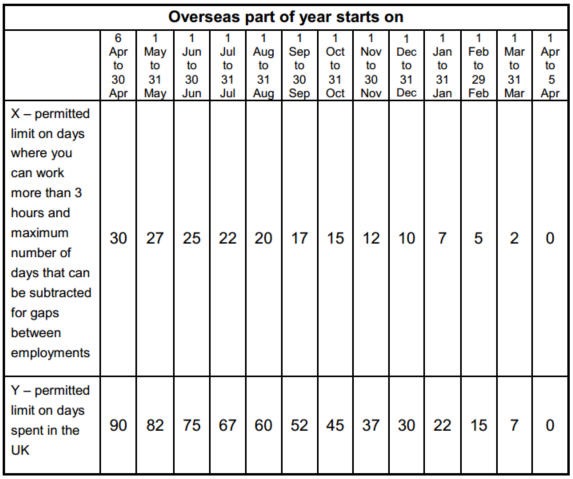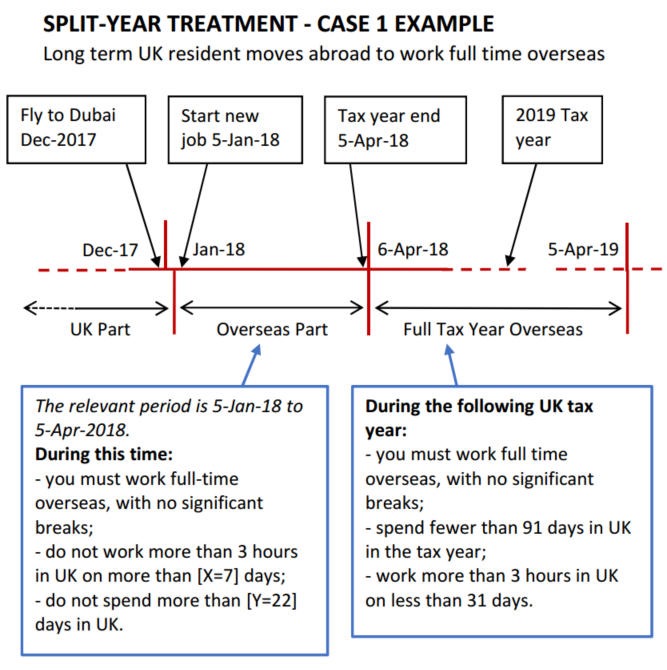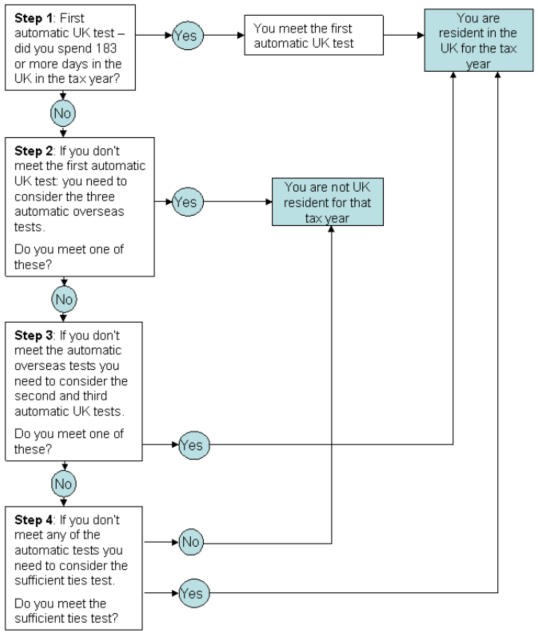 10/6/2018. Please note. This article is a summary, for general information only. It is not tax advice.
10/6/2018. Please note. This article is a summary, for general information only. It is not tax advice.Whether you pay UK tax depends on your residence. Non-UK residents will pay tax on their UK income, but not on their foreign income. So, if you live outside the UK, what counts is whether HMRC considers you to be non-resident for tax purposes.
The Basics - UK Statutory Residence Test (SRT)
A few years ago the UK introduced the Statutory Residence Test.You’re automatically UK resident if either:
- you spent 183 or more days in the UK in the tax year, or
- your only home was in the UK - you must have owned, rented or lived in it for at least 91 days in total - and you spent at least 30 days there in the tax year
- you spent fewer than 16 days in the UK (or 46 days if you haven’t been classed as UK resident for the 3 previous tax years), or
- you work abroad full-time (averaging at least 35 hours a week) and spent fewer than 91 days in the UK, of which no more than 30 were spent working
(The above is just the basic outline. There are a range of other UK and overseas ‘automatic tests’, described later.)
Split-Year Treatment – Does It Apply To You?
When you move in or out of the UK, the tax year is split into a resident-part and a non-resident-part. You only pay UK tax on foreign earnings based on the time you were living in the UK. This is called Split-Year Treatment.You don’t need to claim split-year treatment – it’s applied automatically; but you won’t get it if you live abroad for less than a full tax year. There are other conditions you need to meet, and the HMRC rules break down an individual’s situation according to several defined ‘Cases’.
For UK expats starting work full time overseas, Case 1 is likely to be most relevant.
Case 1: Starting full-time work overseas
You may meet the criteria for split year treatment for a tax year in which you begin full-time work overseas. You must:- be UK resident for the tax year in question, and
- be UK resident for the previous tax year (whether or not it was a split year), and
- be non-UK resident in the following tax year because you meet the third automatic overseas test (see below), and
- satisfy the overseas work criteria during a relevant period.
A relevant period is any period consisting of 1 or more days that:
- begins with a day that falls within the tax year, and
- is a day on which you do more than 3 hours work overseas, and
- ends with the last day of the tax year.
- work full-time overseas during a relevant period, and
- have no significant break from overseas work during that period, and
- do not work for more than 3 hours in the UK on more than the permitted limit of days during that period, and
- spend no more than the permitted limit of days in the UK during that period.

Worked Example of Split-Year Treatment – UK Expat Arriving In UAE To Start Full Time Work (Case 1)

More Detail on the SRT Automatic Tests
The SRT is complex, and the information in this article is just a summary only. The HMRC guide to the SRT is 102 pages! The above simple tests at the top of this article are not the full story – there are additional automatic UK tests and automatic overseas tests. These are applied per a flow-chart, detailed below.
The automatic overseas tests are defined below
First automatic overseas test - You were resident in the UK for 1 or more of the 3 tax years preceding the tax year, and you spend fewer than 16 days in the UK in the tax year.Second automatic overseas test - You were resident in the UK for none of the 3 tax years preceding the tax year, and you spend fewer than 46 days in the UK in the tax year.
Third automatic overseas test - You work full-time overseas over the tax year, without any significant breaks during the tax year from overseas work, and (i) you spend fewer than 91 days in the UK in the tax year, and (ii) the number of days in the tax year on which you work for more than 3 hours in the UK is less than 31.
Here are the second and third automatic UK tests
Second automatic UK test - The second automatic UK test is relevant if you have or had a home in the UK during all or part of the tax year. You will meet this test if there is at least 1 period of 91 consecutive days, at least 30 days of which fall in the tax year, when you have a home in the UK in which you spend a sufficient amount of time (30 days), and either you (i) have no overseas home, or (ii) have an overseas home or homes in each of which you are present (for no matter how short a period) on fewer than 30 days in the tax year (the permitted amount of time).Third automatic UK test - You work full-time in the UK for any period of 365 days, with no significant break from UK work and (i) all or part of that 365-day period falls within the tax year, and (ii) more than 75% of the total number of days in the 365-day period when you do more than 3 hours of work are days when you do more than 3 hours of work in the UK, and (iii) at least 1 day which is both in the 365-day period and in the tax year is a day on which you do more than 3 hours of work in the UK.
If you believe your situation is complex enough for these tests to be relevant, you should definitely get advice from a UK tax accountant.
No comments:
Post a Comment
Roy says: "Thanks for taking the time to leave a message, comment, or continue the conversation!"